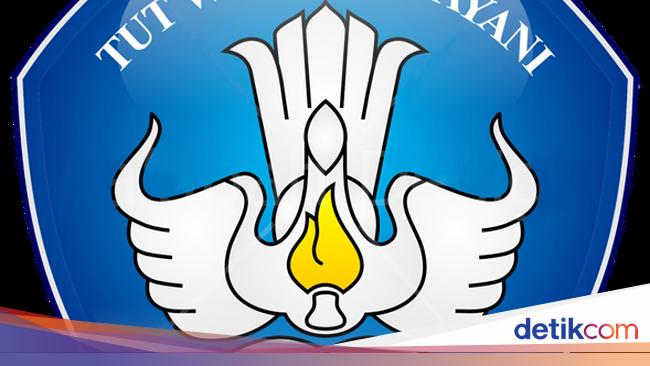Jakarta –
Semboyan Tut Place Handayani became the logo of the Ministry of Education, Culture, Research and Technology (Ministry of Education and Culture). This logo is also commonly used as a visual media in the context of celebrating important days in the field of education.
Like when National Education Day (National Education Day), the Ministry of Education and Culture also invites the use of the Tut Wuri Handayani logo along with the National Education Day commemorative logo. For this reason, you need to know the following information regarding the official logo:
Link Download Logo Tut Wuri Handayani
The Tut Wuri Handayani logo is in the shape of a pentagon, with a blue background and a symbol in the form of a combination of a bird, bell and book. Above the symbol is written the motto ‘Tut Wuri Handayani‘.
ADVERTISEMENT
SCROLL TO CONTINUE WITH CONTENT
The download link or download the Tut Wuri Handayani logo can be accessed via the official Kemendikbudristek website. This logo can be downloaded in a number of document formats for use as desired. Here’s a list of links:
Description of the meaning of the Tut Wuri Handayani logo
The following is a description of the meaning of the Tut Wuri Handayani symbol:
- Area of a Pentagon (Light Blue) depicts the nature of Pancasila life.
- Semboyan Tut Place Handayani used by Ki Hajar Dewantara in implementing his education system. The inclusion of this motto means completing our appreciation and respect for the late Ki Hadjar Dewantara, whose birthday has become National Education Day.
- Patterned Flaming Bell Garuda Belencong (lit) is a lamp specifically used in shadow puppet shows. The lights of the bells make the show come alive.
- Eagle (which is the motif of the belencong) gives a picture of a dynamic nature, brave, capable and brave enough to independently navigate the vast skies. The Garuda’s tail and wings are depicted as five each, which means: ‘one word with Pancasila deeds’.
- Books is a source of all knowledge that can be useful for human life.
The meaning of the colors in Tut Wuri Handayani’s symbol:
- White color The tail and wings of the Garuda and the book mean holy, clean and selfless.
- Golden yellow color the flame means the majesty and nobility of devotion.
- Light blue color in the pentagon area it means unending devotion with a deep outlook on life (Pancasila outlook on life).
The History Behind the Tut Wuri Handayani Logo
The Tut Wuri Handayani symbol as the logo of the Ministry of Education and Culture (formerly known as the Ministry of Education and Culture) was determined based on:
- Decree of the Minister of Education and Culture No.: 0398/M/1977 concerning the determination of the Emblem of the Ministry of Education and Culture dated 6 September 1977.
- Regulation of the Minister of Education and Culture of the Republic of Indonesia Number 6 of 2013 concerning Service Manuscripts within the Ministry of Education and Culture.
Tut Wuri Handayani’s motto consists of:
The meaning of Tut Wuri Handayani’s motto means following from behind by influencing. Thus, the meaning of Ki Hadjar Dewantara’s slogan “ing ngarso sung tuladaha, ing madya mangun karso, tut wuri handayani” is “when in front gives an example, when in the middle gives inspiration (inspiration), when behind gives encouragement”.
According to the Ministry of Education and Culture’s website, the creation of the motto Tut Wuri Handayani was initially aimed at competing with colonial education at that time. This motto has been used in the world of education, such as the motto Tut Wuri Handayani SD (primary school) and is part of the logo of the Indonesian Ministry of Education and Culture.
From Tut Wuri Handayani’s motto, a spirit of high education was created for the Indonesian people. Then, based on the decision of the Minister of Education and Culture Number 0398/M/1977 dated September 6 1977, the motto Tut Wuri Handayani was made the current logo or symbol of the Ministry of Education and Culture.
(wia/idn)
